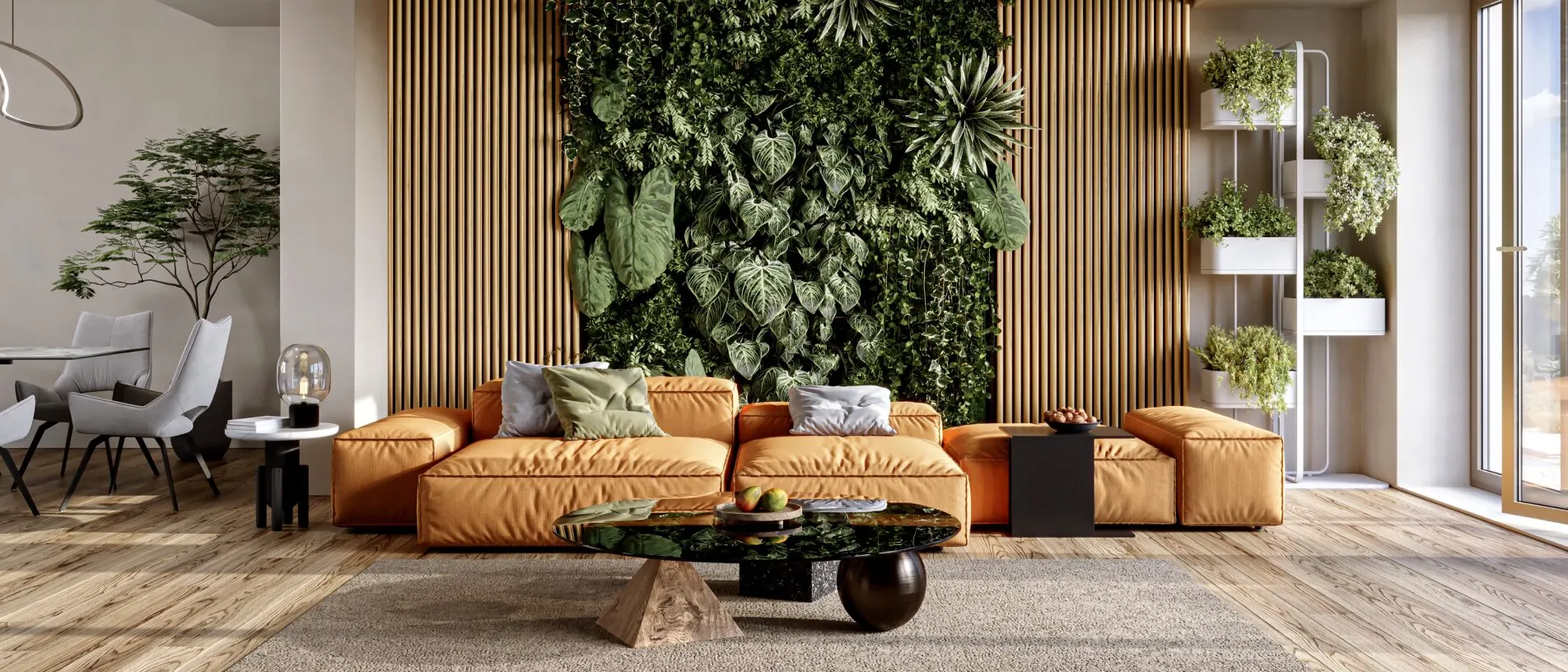You're on the list
By signing up, you agree to receive email marketing.


Today's surplus of style options can be a bit overwhelming when you're first planning a new space. So why not make a design choice that benefits both your health and that of the world around you?
The principles of biophilic design are perfect for everyone looking to get back to their evolutionary roots and break free from the constraints of most man-made designs. Just keep in mind that the biophilic style requires careful, wholesome execution.
Make sure you have the style basics in mind before shopping for the furniture you’ll use to transform your world.
Biophilic design is a decorating style that’s meant to enhance the mood and productivity of any lived space. The concept spans a broad range of applications from biophilic architecture to the intimate realms of home and office design.
The philosophy of biophilia is love for the natural environment. The core principle is based on the fact that humans spent most of our evolutionary history out in the natural world, not locked away in man-made boxes.
Biophilic design encompasses ideas from theorists, scientists, and design experts. Studies show that simple and thorough integrations of nature boost your mood, productivity, and creativity. All of this translates to a lot of bang for your buck as you start the exciting adventure of designing your living spaces.
Before beginning your biophilic design process, it’s important to consider your complete environment. To successfully achieve this style, you must consider your space as a whole before systematically weaving natural, biophilic elements into it.
Take the time to think about how you experience the world around you both when you’re inside your space and out in the world. Don’t sporadically plan your design. Instead, each choice, from your couch to your lighting fixtures, should support the seamless integration of the natural world with your indoor environment.
Regardless of which natural area you’re attempting to embody, like a forest floor or a lakeside field, a few elements are key to every biophilic design.
The first of these is incorporating nature in both direct and indirect ways. Direct incorporations of nature include ideas like maximizing access to natural light and fresh air. Many spaces also benefit from integrating plants and water elements. When physically moving nature indoors is too costly or logistically difficult, you can infuse your space with indirect nods to nature. This includes the use of leaf prints, honeycomb patterns, and flowing lines in your furniture, art, and accessories.
Avoid sharp angles and an emphasis on straight lines. Instead, for example, choose biophilic bedroom furniture made from natural, curving wood, lamps with shades that mimic filtered daylight, and strategically placed mirrors to increase reflected light. Every aspect of a room — even concepts like shade and air quality — should come into play within your overall design. When properly executed, the materials, colors, and patterns that you use prioritize your biological need for nature.
The second key element is the use of the entire place and space you’re working with. Each space you live and work in has a function. They also have pre-existing design limitations. The way that you incorporate the natural world into this space should enhance these static elements, not detract from them. In fact, your goal should be to control the space enough that productivity and creativity skyrocket upon your design’s completion.
Plenty of design styles focus on the incorporation of nature into man-made spaces. It’s important to distinguish between these styles and the ideas at the heart of biophilic design.
To be clear, the natural elements you should focus on for true biophilic design are those that actually influenced human evolution. This means that the use of deep-sea or outer space themes, though natural, is not biophilic.
While elements from these spaces are beautiful, they don’t get to the heart of the human psyche in the same way as designs based on jungles, meadows, wetlands, and forests. Even desert-based designs have minimal use within the biophilic world.
Another mistake that takes you farther away from biophilic themes is the incorporation of nature as a hasty afterthought. Simply sticking a house plant into your space is not enough to evoke all of the benefits of a true biophilic style.
Instead, consider all of the ways that plant-based concepts can be incorporated into a space. This includes the use of plant patterns, plant art, the color green.
This thorough attention to detail is emotionally evocative in a way that provides comfort, security, and control of your natural space: all things our ancestors craved from the world around them.
To integrate biophilia design into your living spaces, start with a desire to reconnect with nature. Then choose an environmental inspiration for the focus of your design themes. Experts in the field tend to favor local cultures and environments. But you can also base your choice on a natural space that you love or long for.
Choose your pieces with care while holding themes of order, exploration, safety, and awe in mind. This concept applies to everything from large pieces like chairs, dressers, and butcher’s blocks to small things like vases, lamps, and pillows. When properly done, these spaces help manage feelings of separation and homesickness that are so pervasive in the modern era.
Renewing your connection to humanity’s ancestral environment increases your awareness of both your own and nature’s needs. When properly integrated, the benefits are nearly universal. So get started making your space a better place today.
You're on the list
By signing up, you agree to receive email marketing.